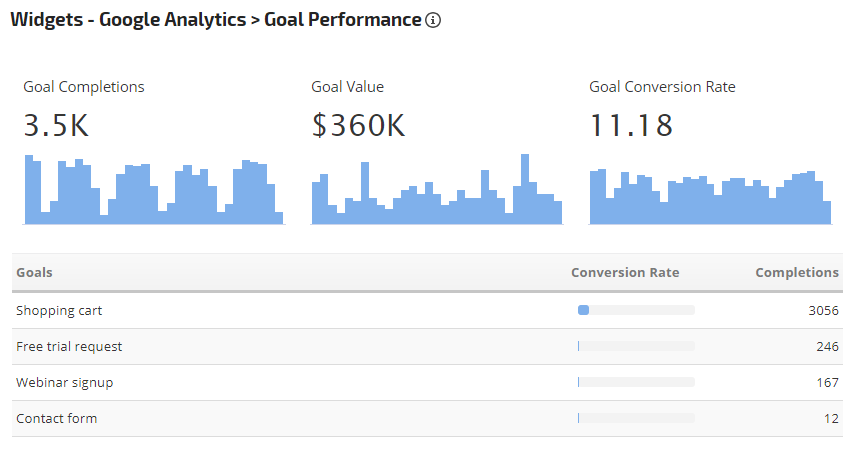Discover the Limitations of Google Analytics Goals: Revealing the Information Types That Remain Untrackable
As businesses significantly rely on data-driven decision-making, comprehending the restrictions of devices like Google Analytics comes to be extremely important. While Google Analytics Goals offer important understandings into user communications, there exist information kinds that avoid monitoring, positioning obstacles to a thorough understanding of individual behavior.
Incomplete User Trip Tracking
Insufficient user journey monitoring within Google Analytics can hinder the ability to properly assess individual habits. When the individual trip is not completely tracked, there are gaps in the data that stop a thorough understanding of just how individuals connect with a web site. This lack of understanding can lead to missed out on opportunities for optimization and renovations to the user experience.
One usual concern with incomplete customer trip monitoring is the failure to see the full course that customers take before finishing a goal or leaving the website. Without this details, it is testing to recognize where customers may be encountering obstacles or rubbing points that stop them from transforming. Additionally, incomplete monitoring can obscure the effect of certain marketing initiatives or web site changes on individual habits.
To address this constraint, it is essential to establish up correct monitoring devices within Google Analytics to record the whole individual journey. This might involve establishing occasion tracking, objective funnels, or making use of tools like Google Tag Supervisor to guarantee that no important communications go unrecorded. By gaining an extensive sight of the customer journey, web site proprietors can make even more informed decisions to improve user interaction and drive conversions.
Acknowledgment Challenges
Browsing through acknowledgment difficulties in Google Analytics calls for a detailed understanding of how various touchpoints add to the total conversion process. Attribution challenges develop from the complexity of modern consumer journeys, where customers communicate with multiple channels before transforming.
One typical attribution obstacle is the problem in associating conversions to the right source, especially in cases where individuals communicate with numerous networks prior to transforming. Furthermore, cross-device tracking presents an additional acknowledgment obstacle, as individuals commonly switch in between devices during their trip, making it testing to track their interactions perfectly.
Offline Conversions
Provided the challenges related to attributing conversions accurately in online networks, the dimension of offline conversions presents a significant chance for marketing professionals seeking a more extensive understanding of their customers' trip. Offline conversions describe activities that consumers take in the physical globe, such as making acquisitions in brick-and-mortar stores or over the phone, going to events, or involving with printed products - what data is google analytics goals unable to track. These conversions are critical for services that run both online and offline, as they offer More Bonuses useful insights right into the view it efficiency of advertising projects throughout different touchpoints
Tracking offline conversions typically presented a significant difficulty for marketers, as it was testing to link these actions back to particular online interactions precisely. Nevertheless, with innovations in technology, such as the assimilation of CRM systems, distinct identifiers, and discount coupon codes, organizations can now bridge the space in between online and offline information to obtain a much more alternative view of consumer habits. By properly determining offline conversions, marketing experts can enhance their methods, assign resources more effectively, and eventually improve the total client experience.
Cross-Device Tracking
Cross-device monitoring plays a critical function in recognizing the interconnected nature of customers' electronic communications throughout numerous tools. In today's omnichannel world, where users effortlessly switch over in between tablets, desktop computers, and mobile phones, tracking their behavior across these gadgets is important for marketing professionals to gain a comprehensive sight of their client trip.

Furthermore, privacy issues and laws such as GDPR and CCPA have additionally challenging cross-device tracking. With users demanding even more control over their information and increased restrictions on tracking innovations, online marketers need to locate innovative and privacy-compliant means to attach user communications throughout devices.
Dynamic Web Content Engagement
Recognizing individual involvement with vibrant material is pivotal in enhancing digital advertising strategies for improved audience communication. Dynamic material refers to internet site components that alter based upon customer behavior, preferences, or other factors, offering a customized experience. Tracking user interactions with vibrant material poses difficulties for standard analytics devices like Google Analytics.
While Google Analytics can track standard communications like clicks and web page sights, it may struggle to record more nuanced involvements within dynamic web content. what data is google analytics goals unable to track. Metrics such as time invested in details vibrant components, hover actions, or communications within pop-ups are commonly not conveniently quantifiable utilizing conventional tracking approaches. This limitation impedes marketers' capacity to completely realize exactly how individuals are engaging with vibrant material and tailor their methods as necessary

Final Thought
In conclusion, Google Analytics goals have constraints in tracking incomplete user trips, associating conversions precisely, recording offline conversions, tracking cross-device communications, and determining vibrant material interaction. These restraints highlight the importance of discovering additional monitoring methods and tools to gain a more detailed understanding of individual actions and conversions past what Google Analytics can supply.
While Google Analytics Goals offer important understandings into customer interactions, there exist information types that avoid tracking, posturing difficulties to a comprehensive understanding of customer behavior.Insufficient customer journey monitoring within Google Analytics can hinder the capability to properly assess customer behavior. When the user journey is not totally tracked, there are voids in the data that stop a thorough understanding of just how users communicate with a site.One usual issue with incomplete customer trip tracking is the lack of ability to see the complete course that individuals take in the past finishing an objective or leaving the site. By getting a thorough view of the customer trip, web site owners can make more educated choices to enhance customer interaction and drive conversions.